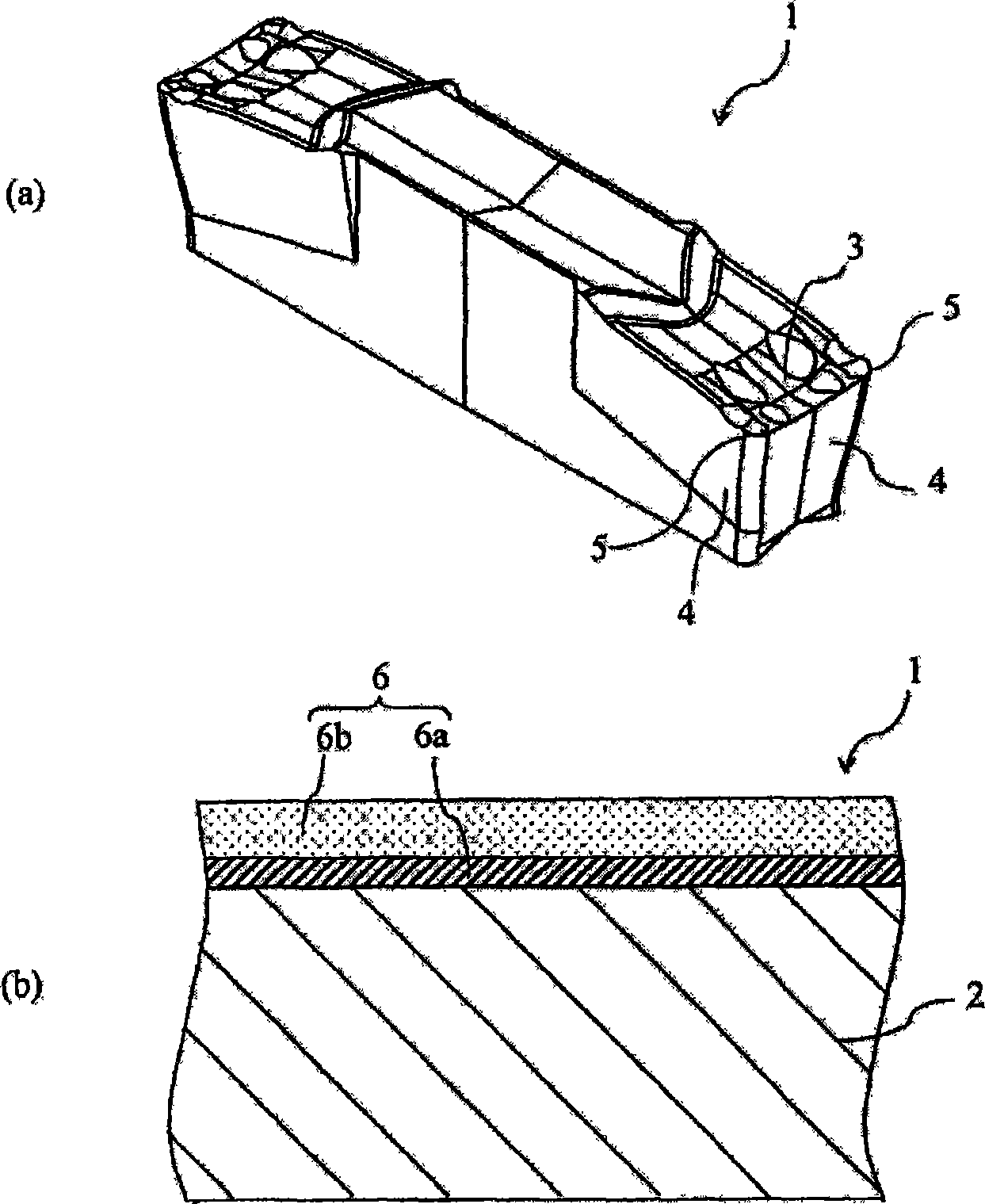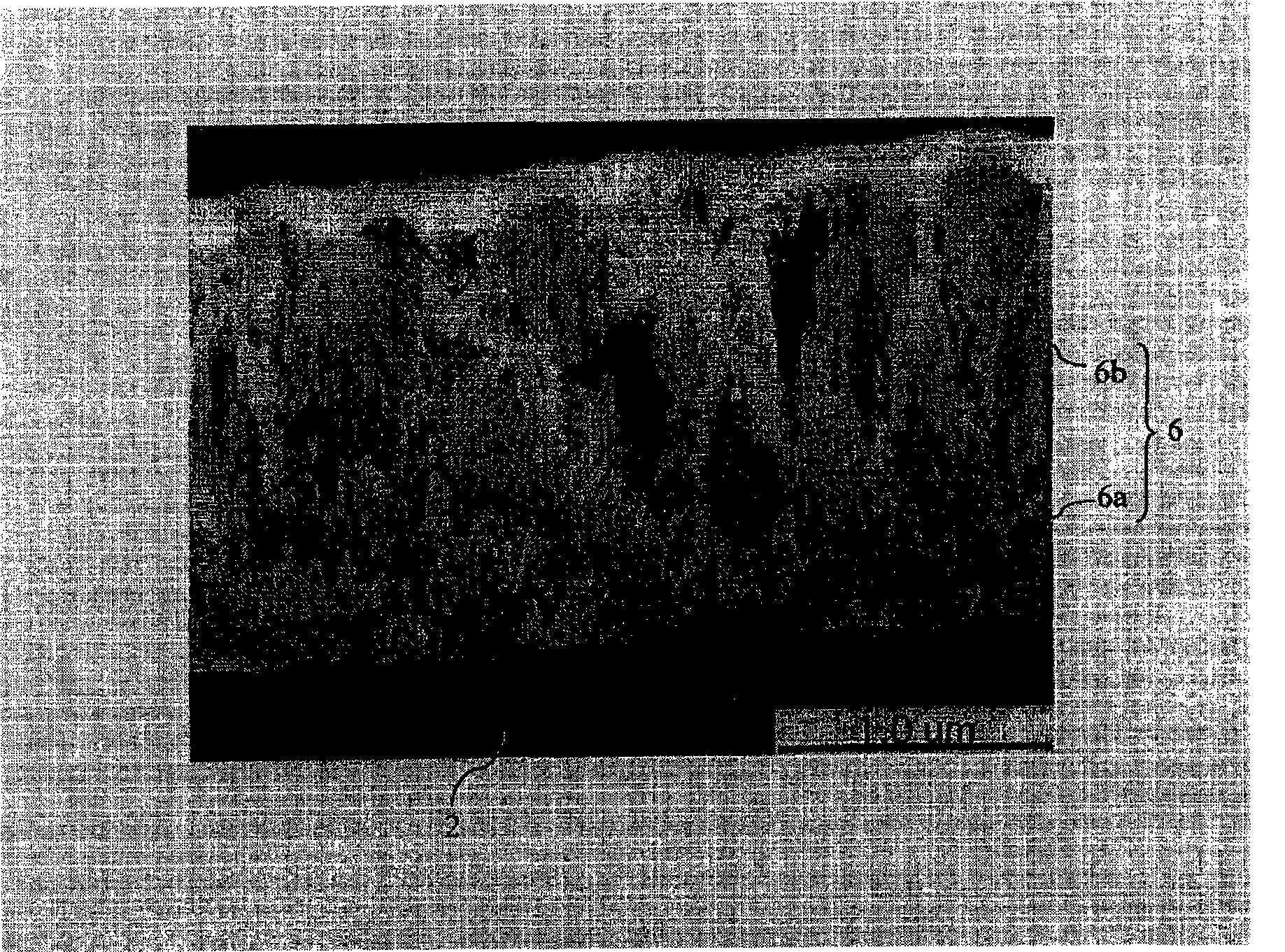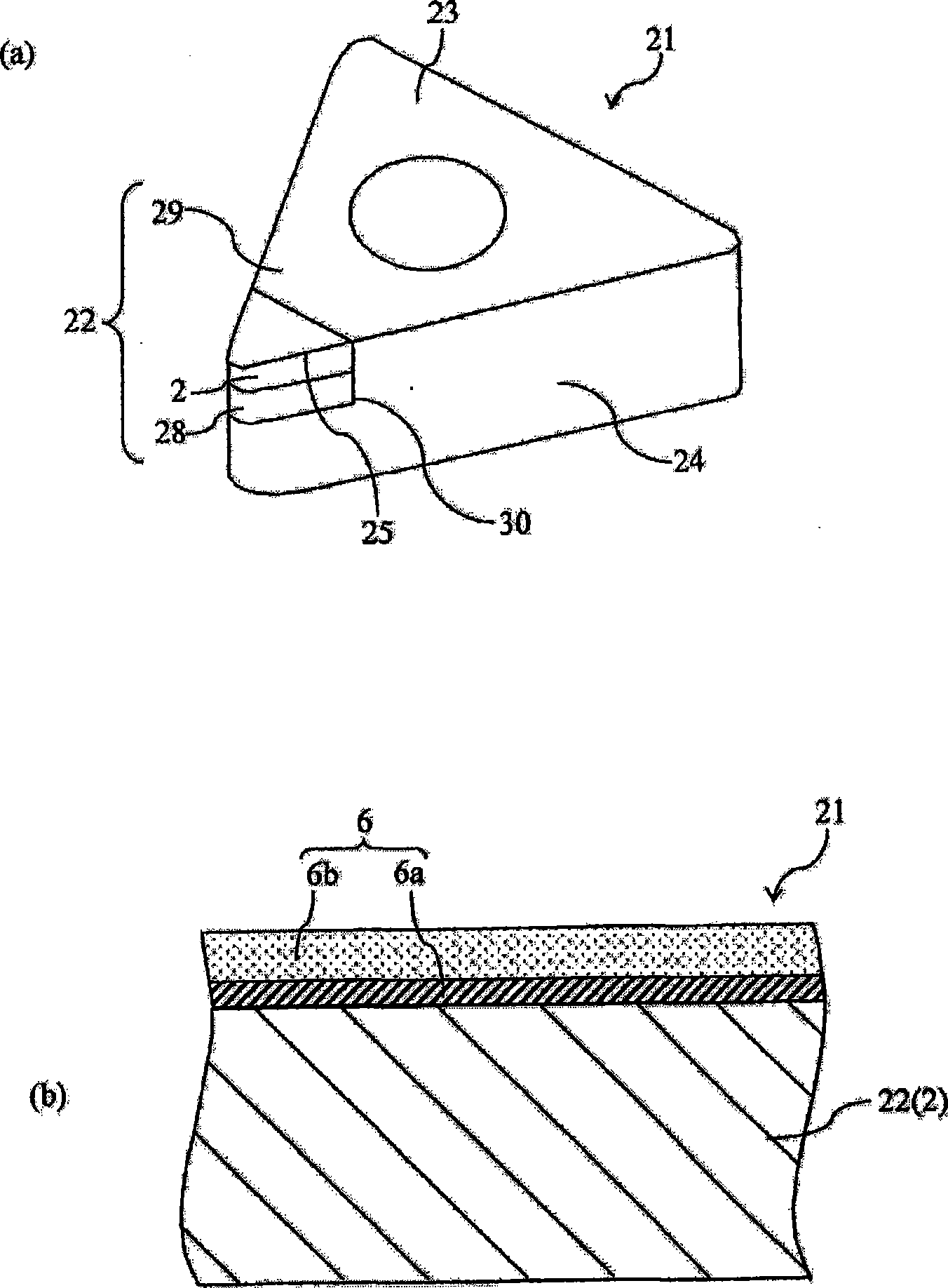Surface-coated tool
A technology of surface coating and tools, which is applied in the field of surface coating tools, can solve the problems of insufficient hard film adhesion, increased tool surface roughness, and smaller contact area, so as to achieve uniform structure and composition, and wear resistance High performance and high fracture resistance, high hardness
- Summary
- Abstract
- Description
- Claims
- Application Information
AI Technical Summary
Problems solved by technology
Method used
Image
Examples
Embodiment I
[0094]
[0095] Mainly composed of tungsten carbide (WC) powder with an average particle size of 0.8 μm, 10% by mass of cobalt (Co) powder with an average particle size of 1.2 μm, 0.2% by mass of cobalt (Co) powder with an average particle size of 1.0 μm Vanadium (VC) powder, 0.6% by mass of chromium carbide (Cr 3 C 2 ) powder is formed into a triangular groove cutting tool shape (Kyocera groove insert GBA43R300MY) by press molding, followed by binder removal treatment, and fired at 1450°C for 1 hour in a vacuum of 0.01Pa. into a superhard alloy. In addition, the surface of the rake face of each sample was ground by shot blasting, brushing, or the like. In addition, the produced cemented carbide is subjected to edge treatment (honing) by brush processing to form a base.
[0096] A hard coating layer was formed on each of the compositions shown in Table 1 on the substrate produced in this way by a sputtering method. In addition, in sample No. I-7, a TiN layer was formed w...
Embodiment II
[0115]
[0116] Mainly composed of tungsten carbide (WC) powder with an average particle size of 0.8 μm, 10% by mass of cobalt (Co) powder with an average particle size of 1.2 μm, 0.2% by mass of cobalt (Co) powder with an average particle size of 1.0 μm Vanadium (VC) powder, 0.6% by mass of chromium carbide (Cr 3 C 2 ) powder, formed into the shape of a cutting tool for edge exchange milling (BDMT11T308ER-JT) by stamping, followed by binder removal treatment, and fired at 1450°C for 1 hour in a vacuum of 0.01Pa to make a cemented carbide . In addition, the rake face surface of each sample was ground by shot blasting, brushing, or the like. In addition, the produced cemented carbide is subjected to edge treatment (honing) by brush processing to form a base.
[0117] A hard coating layer with various compositions shown in Table 3 was formed on the substrate produced in this way by a sputtering method. In addition, in sample No. II-7, a TiN layer was formed with a layer th...
Embodiment III
[0136]
[0137] cBN raw material powder with an average particle size of 2.5 μm, TiC raw material powder with an average particle size of 1.5 μm, TiN raw material powder with an average particle size of 1.2 μm, TiCN raw material powder with an average particle size of 1 μm, and NbC raw material powder, TaC raw material powder with an average particle size of 1.1 μm, Ni raw material powder with an average particle size of 0.9 μm, metal Al raw material powder with an average particle size of 1.2 μm, metal Co raw material powder with an average particle size of 0.8 μm, The composition shown in Table 5 was prepared, and the powder was mixed for 16 hours with a ball mill using alumina balls. Then, the mixed powder was press-molded under a pressure of 98MPa. Use ultra-high pressure and high temperature equipment to heat up the obtained molded body at the speed shown in Table 5, and after firing at a pressure of 5.0 GPa at the temperature and time shown in Table 5, the temperature ...
PUM
 Login to View More
Login to View More Abstract
Description
Claims
Application Information
 Login to View More
Login to View More - R&D
- Intellectual Property
- Life Sciences
- Materials
- Tech Scout
- Unparalleled Data Quality
- Higher Quality Content
- 60% Fewer Hallucinations
Browse by: Latest US Patents, China's latest patents, Technical Efficacy Thesaurus, Application Domain, Technology Topic, Popular Technical Reports.
© 2025 PatSnap. All rights reserved.Legal|Privacy policy|Modern Slavery Act Transparency Statement|Sitemap|About US| Contact US: help@patsnap.com



